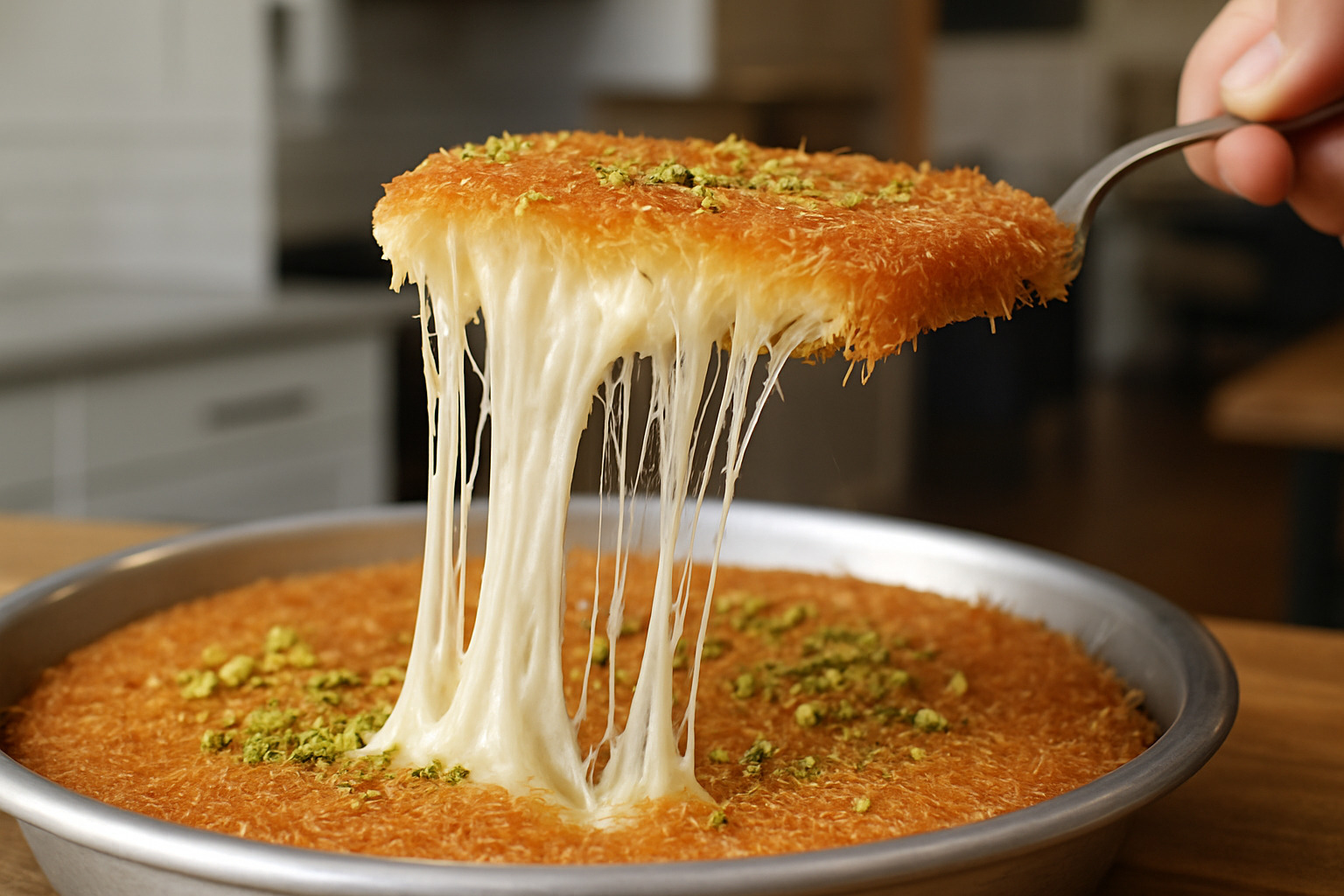The Flavorful Mix of Middle Eastern Food
Ever sat down to a table where the aromas alone tell stories of ancient trade routes and sun-drenched landscapes? That’s the magic of Middle Eastern food – a cuisine that doesn’t just feed your body but transports your senses across continents.
Stretching from the Mediterranean shores to the Persian Gulf, Middle Eastern food represents one of humanity’s oldest and most influential culinary traditions. This isn’t just food; it’s living history on a plate. Born in the Fertile Crescent where our ancestors first cultivated wheat thousands of years ago, these dishes have evolved through centuries of cultural exchange, conquest, and innovation.
What makes a meal distinctly Middle Eastern? Think generous drizzles of olive oil, vibrant spice blends that dance on your tongue, fresh herbs by the handful, and a beautiful balance of vegetables, grains, and proteins. The cuisine transforms humble ingredients into something magical – chickpeas become silky hummus, eggplant transforms into smoky baba ganoush, and fresh vegetables shine in tabbouleh that bursts with lemony brightness.
“Fresh, wholesome, healthy, rich, aromatic – it’s no wonder that the past decade has seen Middle Eastern cuisine’s global profile skyrocketing,” notes food writer Maria Athanasopoulou. And she’s right – with its emphasis on plant-forward eating, bold flavors, and wholesome cooking techniques, this cuisine feels perfectly aligned with contemporary food values while being rooted in ancient wisdom.
The regional variations add fascinating depth to the culinary landscape. Lebanese cuisine celebrates fresh herbs and garlic with abandon, while Moroccan dishes often surprise with their sweet-savory combinations. Persian food lifts rice dishes to an art form, frequently incorporating fruits with meats, while Turkish cuisine beautifully bridges Mediterranean and Middle Eastern flavor traditions.
At the heart of every Middle Eastern meal is bread – whether it’s warm, pillowy pita, crisp lavash, or man’oushe topped with za’atar herb blend. Breaking bread together isn’t just sustenance; it’s the cornerstone of the region’s legendary hospitality tradition.
For newcomers to these flavors, starting with a meze spread provides the perfect introduction. These small shared plates – from creamy labneh to falafel – encourage conversation and connection, embodying the communal spirit that makes Middle Eastern food so special. The dining experience itself tells you something essential about the culture: here, meals aren’t rushed affairs but opportunities to strengthen bonds and celebrate life together.

1. A Mosaic of Lands: Countries Behind Middle Eastern Cuisine
When we talk about Middle Eastern food, we’re really exploring a vibrant mix of flavors woven across thousands of years and dozens of cultures. This isn’t just one cuisine – it’s a beautiful collection of related food traditions that share common threads while celebrating their unique identities.
The heart of Middle Eastern food beats across several distinctive regions, each adding its own special ingredients to the mix. In the Levant – Lebanon, Syria, Jordan, Palestine, and Israel – you’ll find an abundance of fresh herbs, zesty salads like tabbouleh, and the beloved mezze culture that brings people together around small shared plates.
Travel to the Arabian Peninsula (Saudi Arabia, Yemen, Oman, and the Gulf states), and you’ll find aromatic rice dishes often crowned with meat and sweetened with dates – reflecting both the desert landscape and centuries of prosperity from trade.
North African countries like Egypt, Morocco, Tunisia, and Algeria bring their own magic to the table with slow-cooked tagines, fluffy couscous, and bold spice combinations that dance on your tongue. As food historian Bethany Kehdy beautifully puts it, “Middle Eastern cuisine is soul-soothing, wholesome food in a jiffy, although an acquired taste, I’ll admit.”
The influence of Persia (modern-day Iran) can’t be overstated – their sophisticated approach to cooking introduced delicate rice preparations, fruit-infused stews, and subtle spicing that liftd the region’s cuisine. Turkey stands as a culinary bridge between Europe and Asia, carrying the legacy of the Ottoman Empire in its diverse regional dishes. Even Cyprus has its place in this story, blending Greek and Middle Eastern influences with unique contributions like squeaky grilled halloumi cheese.
History has shaped these food traditions in profound ways. The mighty Persian Empire spread its culinary influence across the region, introducing rice cultivation and many fruits. Islamic expansion created a vast network of shared food culture stretching from Morocco to Indonesia. Later, the Ottoman Empire unified cooking styles across its territories – that’s why you’ll find variations of baklava everywhere from Greece to Iraq.
The ancient Silk Road played a crucial role too, bringing spices, techniques, and ingredients from as far as China and India. These influences didn’t just stop centuries ago – Middle Eastern food continues to evolve today as it finds new fans worldwide while absorbing contemporary influences.
Birthplace of Wheat & Ancient Recipes
There’s something truly special about enjoying a piece of warm flatbread in the Middle East – you’re tasting the echo of humanity’s first agricultural revolution. The Fertile Crescent – that curved strip of land stretching from Egypt through the Levant into Mesopotamia (modern Iraq) – is where our ancestors first domesticated wheat around 10,000 BCE, forever changing how humans would eat.
This wasn’t just about wheat. In this cradle of agriculture, people also began cultivating barley, lentils, chickpeas, figs, dates, and olives – ingredients that remain fundamental to Middle Eastern food today. When you enjoy hummus, tabbouleh, or a date-sweetened dessert, you’re connecting with this ancient agricultural heritage.
Archaeological findies have revealed just how sophisticated early Middle Eastern cooking really was. Clay tablets from Babylon contain what many consider the world’s oldest written recipes, dating back to around 1700 BCE. These ancient instructions already show complex cooking techniques and clever use of herbs and spices – the beginnings of the flavor-forward approach that defines Middle Eastern food today.
The ancient Egyptians were particularly talented bakers, creating over 40 varieties of bread and cakes. They also pioneered beer brewing, but not the light lager you might imagine. Egyptian beer was thick, nutritious, and often flavored with dates or honey – more of a meal than a recreational drink. You can learn more about this fascinating history in Beer in Ancient Egypt.
What makes Middle Eastern food truly remarkable is how directly it connects to these ancient traditions. As renowned food writer Claudia Roden observes, “In Egypt, you can eat exactly what the ancient Egyptians ate.” The flatbreads enjoyed throughout the region are descendants of those early loaves, while Egypt’s national dish kushari (a hearty mix of rice, lentils, and pasta) reflects the enduring importance of grains and legumes in the regional diet.
This unbroken culinary lineage, spanning thousands of years, is what gives Middle Eastern food its soul – a delicious connection to the very beginnings of human civilization.
2. Pantry Essentials: Grains, Vegetables & Proteins
Step into any Middle Eastern kitchen and you’ll find a treasure trove of ingredients that have nourished generations. These pantry staples aren’t just food—they’re the storytellers of a cuisine that has thrived for millennia, each ingredient carrying the whispers of ancient agricultural wisdom.
Middle Eastern food revolves around a beautiful simplicity: wholesome ingredients transformed through clever techniques and thoughtful spicing. Let’s explore the building blocks that make this cuisine so special.
The humble grain sits at the heart of every Middle Eastern meal. Wheat, first domesticated in the Fertile Crescent, appears in countless forms. There’s bulgur, the parboiled cracked wheat that gives tabbouleh its satisfying chew and forms the backbone of kibbeh. Freekeh, with its distinctive smokiness, comes from wheat harvested young and green, then roasted over open fires. Couscous, those tiny semolina pearls, takes center stage in North African feasts, while rice reaches its pinnacle in Persian cuisine, where it’s transformed into fluffy, aromatic mountains crowned with a crispy golden tahdig crust.
Legumes provide the protein powerhouse in a cuisine that traditionally used meat sparingly. Chickpeas might be the region’s most versatile ingredient—transformed into silky hummus, shaped into crispy falafel, or simmered in hearty stews. Lentils in various hues create everything from soul-warming soups to protein-packed salads. In Egypt, fava beans become ful medames, the beloved national breakfast that’s sustained pyramid builders and modern Cairenes alike.
The vegetables of the Middle East deserve their own celebration. Eggplant, the purple prince of Middle Eastern produce, becomes smoky baba ganoush when roasted or transforms into meltingly tender comfort when stuffed and braised. Seasonal abundance dictates the menu—tomatoes and peppers in summer, squash and root vegetables in cooler months. Leafy greens like grape leaves, chard, and purslane find their way into everything from stews to stuffed delicacies.
When it comes to proteins, lamb reigns supreme across the region, its distinctive flavor perfect for kebabs or slow-cooked stews. Chicken features in everyday cooking, while coastal areas accept the bounty of the sea with simply prepared fish dishes. Dairy plays a crucial supporting role—tangy yogurt cools spicy dishes and forms the base of refreshing drinks, while fresh cheeses like halloumi and feta add salty punctuation.
What truly sets Middle Eastern food apart is its ingenious use of fruits in savory cooking. Dates sweeten tagines, dried apricots add complexity to meat dishes, and pomegranate seeds provide bursts of ruby brightness. The interplay between sweet and savory creates depth that makes this cuisine so captivating.

Why Spices Define Middle Eastern food
If ingredients are the actors in Middle Eastern food, spices are the directors—orchestrating flavors, highlighting subtle notes, and changing the ordinary into the extraordinary. The Middle East’s position at the crossroads of ancient trade routes blessed its kitchens with an unparalleled spice palette, blending influences from India, Southeast Asia, and Africa.
Unlike cuisines that use spices primarily for heat, Middle Eastern spicing creates depth, aroma, and balance. The earthy warmth of cumin forms the foundation of countless dishes, from falafel to meat rubs. Alongside it, coriander seeds contribute bright citrusy notes, while cardamom pods add mysterious complexity to both coffee and biryani. Cinnamon sticks warm hearty stews, and allspice berries (despite their name, a single spice) contribute essential flavor to Palestinian and Lebanese cooking.
The golden touch of turmeric brings sunshine to rice dishes, while precious saffron threads—worth more than their weight in gold—transform special meals into occasions to remember. Sumac, with its tart cranberry-like flavor, brightens finished dishes with its distinctive burgundy sprinkle. Heat comes more subtly through black pepper and the fruity warmth of Aleppo pepper, named for the ancient Syrian city.
But the true magic happens in the spice blends, each a carefully guarded formula varying by region and family:
Za’atar captures the essence of the Levant in every pinch. This aromatic blend combines wild thyme, oregano, marjoram, tangy sumac, and toasted sesame seeds. As food writer Bethany Kehdy notes, “Za’atar grows wild in Israel/Palestine, Lebanon, Syria, and Jordan and is not the same as oregano.” Drizzled with olive oil on warm flatbread, za’atar creates a simple yet transcendent experience.
Baharat—which simply means “spices” in Arabic—functions as an all-purpose seasoning across the region. Though recipes vary, the warming blend typically includes black pepper, cumin, cinnamon, and cardamom, creating a balanced backdrop for meat dishes and hearty stews.
In North Africa, ras el hanout (meaning “head of the shop”) represents each spice merchant’s finest blend. Containing up to 30 different spices, from rose petals to grains of paradise, it adds mysterious depth to Moroccan tagines and couscous.
Persian cuisine celebrates advieh, a blend often featuring dried rose petals—a distinctly Iranian touch that adds floral notes to the country’s celebrated rice and meat dishes.
Egypt contributes dukkah, a crunchy mixture of nuts, seeds, and spices that serves both as a dip with bread and olive oil and as a textural topping for vegetables and salads.
These thoughtfully composed spice blends are what lift Middle Eastern food from simple to sublime. They transform humble ingredients into a cuisine of remarkable complexity—proving that true culinary magic often lies not in expensive ingredients but in knowing exactly how to season what’s at hand.
For more insight into bringing these global flavors home, check out our guide to spices & souvenirs from your travels.
3. Aroma & Spice: Signature Flavors of Middle Eastern Food
The soul of Middle Eastern food lives in its aromatic ingredients – those magical flavor improvers that transform simple dishes into sensory experiences. Beyond the spice cabinet, these fundamental ingredients create the distinctive taste profile that makes this cuisine immediately recognizable and increasingly beloved worldwide.
Olive oil flows through Middle Eastern cooking like lifeblood. It’s not just a cooking medium but a flavor in itself, drizzled liberally over finished dishes, pooled for bread dipping, and used as the foundation for countless recipes. With some of the world’s oldest olive groves dotting the region, these oils vary delightfully in intensity and character from country to country. As many cooks in the region would say, olive oil truly is “the universal solvent of Middle Eastern cuisine.”
The pungent punch of garlic appears everywhere in this cuisine – raw in vibrant dips, roasted until sweet in stews, and whipped into emulsions. Lebanese cuisine especially celebrates garlic’s potency in toum, a fluffy white garlic sauce so intense it makes your eyes water but so delicious you can’t stop eating it. This national treasure accompanies everything from grilled meats to falafel sandwiches.
Nutty, slightly bitter tahini adds incredible depth and creaminess without dairy. This sesame paste forms the backbone of beloved dishes like hummus and baba ganoush, while also enriching sauces and even sweets like halva. A good tahini should pour slowly like honey and taste rich rather than bitter.
The sweet-sour complexity of pomegranate molasses brightens dishes throughout the Levant and Persia. This reduced pomegranate syrup adds tangy depth to stews, dressings, and marinades. Just a teaspoon can transform an ordinary dish into something memorably complex.
Preserved lemons bring sunshine to the table. These salt-cured treasures from North Africa develop an intense lemony flavor that’s less acidic than fresh lemons. The rinds become soft and deeply flavorful, ready to be chopped into tagines, stews, and salads where they deliver bright bursts of citrus essence.
The subtle floral notes of rose water and orange blossom water reflect Persian influence throughout the region. Used with a delicate hand (too much and your dish will taste like perfume!), these distilled waters create an unmistakable aroma in desserts like baklava and even in some savory rice dishes.
Fresh herbs are never mere garnishes in Middle Eastern cooking but starring ingredients used by the handful. Bright parsley, cooling mint, feathery dill, and fragrant cilantro bring freshness and color to everything from tabbouleh to rice dishes. Za’atar, before becoming a dried spice blend, actually refers to fresh wild thyme that grows abundantly throughout the Levant.
Tangy yogurt serves countless purposes across Middle Eastern tables – cooling fiery dishes, tenderizing meat as a marinade, forming the base of refreshing drinks like ayran, and adding creaminess to desserts. Middle Eastern yogurt typically has a thicker consistency and tangier profile than Western varieties, making it both more versatile and more flavorful.
For sweetness beyond simple sugar, date syrup and grape molasses add complex caramel notes to both desserts and savory dishes. These natural sweeteners have been used since ancient times, long before refined sugar was available.
When these aromatic ingredients come together, they create that magical mix of flavors that makes Middle Eastern food so distinctive. Each one tells a story of ancient trade routes, cultural exchanges, and culinary wisdom passed down through generations.
Homemade Blends to Lift Middle Eastern food
Creating your own spice blends at home connects you to centuries of Middle Eastern culinary tradition while dramatically improving your cooking. There’s simply no comparison between freshly made blends and dusty pre-mixed versions that have been sitting on store shelves for months.
Za’atar Blend brings the essence of the Levant to your kitchen. This versatile mixture can transform morning eggs, lift a simple bowl of hummus, or create an instant appetizer when mixed with olive oil for bread dipping. Toast 2 tablespoons of sesame seeds until golden, then combine with 2 tablespoons dried thyme, 2 tablespoons sumac, 1 teaspoon dried oregano, and ½ teaspoon sea salt. The bright tanginess of sumac balanced with earthy herbs makes this blend utterly addictive.
Capture the magic of street food with Shawarma Spice Mix. This aromatic blend transforms ordinary meats into the mouthwatering, complex flavors of a spinning vertical rotisserie. Combine 2 tablespoons each of ground cumin, coriander and paprika with 1 tablespoon turmeric, 1 tablespoon allspice, 1 teaspoon cinnamon, 1 teaspoon ginger, ½ teaspoon cardamom, and cayenne to taste. Rub generously on chicken, beef or lamb before grilling, and you’ll bring the vibrant flavors of Middle Eastern street corners to your own backyard.
Dukkah, Egypt’s crunchy gift to the culinary world, adds incredible texture and flavor to the simplest dishes. Toast ½ cup hazelnuts (or a mix with pistachios), ¼ cup sesame seeds, 2 tablespoons coriander seeds, 1 tablespoon cumin seeds, 1 teaspoon fennel seeds, 1 teaspoon dried mint, 1 teaspoon sea salt, and ½ teaspoon black peppercorns until fragrant. Cool completely before pulsing to a coarse consistency—you want texture, not powder. Sprinkle over roasted vegetables, hummus, or even your morning avocado toast for an instant upgrade.
The all-purpose Baharat blend works its magic in countless dishes across the Middle East. Its warm, complex profile improves everything from rice pilaf to grilled meats. Mix 2 tablespoons each of ground black pepper, cumin and coriander with 1 tablespoon cinnamon, 1 tablespoon cloves, and 1 teaspoon each of cardamom, nutmeg and paprika. This blend demonstrates how Middle Eastern food balances sweet spices like cinnamon with savory elements like pepper and cumin.
For the best results with these homemade blends, toast whole spices before grinding whenever possible—the difference in aroma is remarkable. Invest in a dedicated coffee grinder for spices (never use your coffee grinder, unless you want cumin-flavored morning brew!). Make smaller batches more frequently rather than large amounts that will lose their potency sitting in your cabinet.
As Bethany Kehdy, celebrated Middle Eastern food writer, reminds us, “Each family has their own special blend,” so adjust these recipes to suit your taste. That’s the beauty of Middle Eastern food—it offers a framework for personal expression while maintaining its distinctive soul.

4. Bread & Meze: The Social Starter Kit
No exploration of Middle Eastern food would be complete without understanding the central role of bread and meze—the small plates that begin a meal but often become the meal itself. This style of eating isn’t just about nourishment; it embodies the region’s heartfelt emphasis on hospitality, sharing, and community.
The Staff of Life: Bread Varieties
Bread throughout the Middle East isn’t just food—it’s revered, considered sacred, and never wasted. As one food historian beautifully puts it, “Bread is a universal food eaten in some form by all classes at nearly every meal in the Middle East.”
Pita (also called khubz or Arabic bread) is the poster child of Middle Eastern breads—that magical round flatbread with a pocket that forms as steam puffs the dough during baking. Watch any Middle Eastern family at mealtime, and you’ll see pita torn into pieces for scooping up dips, split open and stuffed for sandwiches, or even torn and toasted to create the crunchy base of fattoush salad.
In Lebanon, mornings start with man’oushe, a breakfast bread that’s essentially a thin pizza topped with za’atar and olive oil before baking. Street vendors cook it on dome-shaped griddles called saj, serving it rolled with fresh vegetables, tangy labneh, or sprigs of mint—the perfect portable breakfast.
Lavash brings a delicate touch to the bread basket. This thin, soft flatbread beloved in Armenia, Iran, and Turkey is often dramatically draped over special paddles before being slapped against the walls of clay ovens, creating a bread that’s both chewy and tender.
For something truly special, look for tannour bread, baked by pressing dough against the walls of a cylindrical clay oven. The result? A distinctive teardrop shape with a smoky flavor that transports you straight to a Baghdad bakery.
Iraqi samoon with its diamond shape offers the perfect contrast of textures—crisp exterior giving way to a pillowy interior—ideal for breakfast or for sopping up rich stews.
Perhaps most impressive is markook, stretched so thin before baking that it becomes almost translucent, perfect for wrapping around juicy kebabs or folding around vegetables.
These breads aren’t mere accompaniments but essential utensils in Middle Eastern food culture—used to scoop, wrap, dip, and soak. Breaking bread together is both a literal act and a powerful symbol of community.
The Art of Meze
Meze (or mezze) is the Middle East’s answer to tapas—a parade of small dishes served as appetizers, though they frequently become the entire meal. The word comes from the Persian “mazze” meaning “to taste” or “to relish,” perfectly capturing the grazing style these small plates encourage.
A typical meze table feels like a celebration of color and abundance. You might find vibrant hummus sprinkled with sumac and drizzled with olive oil alongside smoky baba ganoush or moutabal made from roasted eggplant. The ruby-red muhammara offers a complex blend of roasted red peppers and walnuts, while labneh—strained yogurt often topped with good olive oil and za’atar—provides cooling contrast.
Fresh salads bring brightness to the spread. Tabbouleh in the Levant is primarily a parsley salad (not the bulgur-heavy version often seen abroad) with tomato, mint, and a zippy lemon dressing. Fattoush transforms stale bread into a delicious salad with sumac-dusted vegetables, while Iranian Shirazi salad offers a simple but perfect combination of cucumber, tomato, and onion brightened with lime juice.
Vegetable dishes might include dolma—grape leaves, peppers, or zucchini stuffed with seasoned rice and sometimes meat—or batata harra, potatoes made fiery with red pepper and garlic. Golden-fried falafel and squeaky grilled halloumi cheese add satisfying protein.
For meat lovers, kibbeh—bulgur and meat croquettes—might appear alongside slices of spicy soujuk sausage or paper-thin pastirma (cured beef). Coastal regions might add fried or grilled calamari or tiny fish.
The genius of meze lies in its variety—the dance of temperatures, textures, and flavors creates an eating experience that’s never boring. As renowned food writer Claudia Roden explains, “Meze represents the most sociable way of eating. It is relaxed, leisurely and convivial.”
Meze Serving Rituals
There’s an art to serving meze that improves the dining experience. Throughout the Middle East, these small plates arrive in choreographed waves rather than all at once, creating a leisurely meal that might stretch for hours as conversation flows.
Cold meze sets the stage: the dips, salads, pickles, and olives appear first, giving diners something to nibble on while catching up. As these are enjoyed, hot meze makes its entrance—falafel sizzling from the fryer, sautéed liver with pomegranate molasses, or golden triangles of grilled halloumi. Finally, more substantial dishes might arrive—small portions of grilled meats or seafood that bridge the gap between appetizer and main course.
The physical arrangement matters too. Dishes are placed in the center of the table for all to share, with small individual plates for each diner. Bread serves as both accompaniment and utensil, torn rather than cut (cutting bread is considered disrespectful in many Middle Eastern cultures), and used to scoop up dips and salads.
In Lebanon and Syria, the meze tradition reaches its pinnacle, with restaurants serving dozens of different small plates in a single meal. This abundance reflects the deep hospitality that characterizes Middle Eastern food culture—the genuine desire to offer guests variety and plenty, regardless of one’s means.

Dining etiquette for meze has its own gentle rhythm: take small portions of each dish, knowing you can always have more; use bread rather than utensils for many dishes; in traditional settings, use only your right hand for eating; pace yourself—meze is meant to be enjoyed slowly; and always express appreciation for the food and the hospitality.
As food writer Maria Athanasopoulou observes, “More than 90% of travelers around the world now pay great attention to food and beverage experiences.” The meze tradition offers exactly the kind of authentic, communal dining experience that today’s culinary travelers seek—a chance to connect not just with new flavors but with a centuries-old tradition of hospitality and shared pleasure. It’s no wonder that flavor fusion has become such a prominent trend, with meze culture influencing small-plate dining around the world.
5. Must-Try Dishes & Drinks in Middle Eastern food
The vibrant world of Middle Eastern food offers a treasure trove of iconic dishes that have captivated food lovers globally. These culinary gems showcase the region’s mastery of turning simple ingredients into unforgettable flavor experiences.
Iconic Main Dishes
The aroma of shawarma spinning on vertical rotisseries is perhaps the most recognizable street food scene across the Middle East. Marinated layers of meat – typically succulent lamb, juicy chicken, or seasoned beef – slowly cook as thin slices are shaved off and tucked into warm flatbread. The magic happens when this tender meat meets tahini sauce, pickled vegetables, and fresh herbs. What began as street food has conquered the world, becoming a global fast-food phenomenon while maintaining its authentic charm.
Falafel stands as the Middle East’s greatest gift to vegetarians – crispy on the outside, fluffy and herb-flecked within. These golden-brown patties made from chickpeas or fava beans (depending on the region) pack a protein punch that satisfies even the most dedicated meat-eaters. Tucked into pita with tahini sauce, fresh vegetables, and a dash of hot sauce, falafel delivers complex flavors despite its humble ingredients.
“You haven’t truly experienced Middle Eastern cuisine until you’ve had a properly made tagine,” says culinary historian Samira Ahmed. Named after the distinctive conical clay pot in which it’s cooked, this North African slow-cooked stew marries meat (often lamb) with fruits, vegetables, and aromatic spices. The vessel’s genius design returns condensation to the dish, creating fork-tender meat and vegetables infused with complex flavors.
In Jordan, mansaf reigns supreme as the national dish and celebratory meal of choice. Lamb cooked in fermented dried yogurt (jameed) creates a tangy sauce that’s ladled over a bed of rice and flatbread. Traditionally eaten communally using the right hand to form rice into balls, mansaf embodies Jordanian hospitality.
The Middle East’s mastery of fire is showcased through various kebabs – from Turkish shish kebab to Iranian koobideh to Lebanese kafta. These skewered meats, often alternated with vegetables, are marinated in spice blends unique to each region before being kissed by charcoal flames. The result is juicy, smoky perfection that needs little more than flatbread and simple accompaniments.
Kofta transforms humble ground meat into flavor-packed morsels across the region. In Lebanon, they’re often grilled on skewers; in Egypt, they might simmer in rich tomato sauce; while Turkish köfte might incorporate bulgur for added texture. What unites them all is the skilled blending of spices and herbs that lifts ground meat to culinary heights.
Palestinian musakhan celebrates the region’s love affair with sumac. Chicken pieces marinated with this tangy spice are baked atop a bed of caramelized onions and served over taboon bread that soaks up all the flavorful juices. It’s comfort food with a sophisticated edge.
Essential Salads and Sides
A proper tabbouleh might surprise Western diners expecting a grain salad. Authentic versions are primarily a vibrant green herb dish – mountains of finely chopped parsley mixed with a modest amount of bulgur wheat, diced tomatoes, mint, and dressed simply with lemon juice and olive oil. It’s a refreshing, palate-cleansing counterpoint to richer dishes.
Fattoush brilliantly transforms stale bread into culinary gold. Toasted pita pieces are tossed with the freshest seasonal vegetables, herbs, and a tangy dressing spiked with ground sumac. The contrast between crisp bread and juicy vegetables creates a salad that’s greater than the sum of its parts.
The humble yet deeply satisfying mujadara – a comforting mix of lentils, rice, and caramelized onions – proves that the most modest ingredients can create remarkable flavors. Often described as “the food of the poor,” this dish transcends class boundaries to become a beloved staple throughout the region.
Once a regional breakfast staple, shakshuka has conquered brunch menus worldwide. Eggs gently poached in a spiced tomato and pepper sauce create a one-pan wonder that’s equally at home at breakfast, lunch, or dinner. Each country has its own version, with variations featuring different spice blends, added vegetables, or even merguez sausage.
Sweet Endings & Sips
Middle Eastern food shines just as brightly when it comes to desserts, which often feature delicate layers of phyllo dough, nuts, and aromatic syrups.
Baklava represents Middle Eastern pastry at its finest – tissue-thin sheets of phyllo dough layered with chopped nuts (typically walnuts, pistachios, or both) and sweetened with fragrant syrup. Regional variations abound: Turkish versions often showcase vibrant green pistachios while Greek interpretations favor walnuts and honey. What unites them all is the addictive contrast between crisp pastry and sweet, nutty filling.
The dramatic cheese-pull of knafeh has made it a social media star, but this dessert has been delighting palates for centuries. Shredded kataifi pastry (or semolina in some versions) sandwiches a layer of melted cheese, all soaked in sweet syrup and topped with crushed pistachios. Often colored orange, this sweet-and-savory treat is particularly beloved in Palestine, Lebanon, and Jordan.
Egyptian umm Ali – a bread pudding made with pastry, milk, nuts, and raisins – comes with a fascinating backstory involving a sultan’s wife celebrating her rival’s demise. Dark origins aside, this comforting dessert remains a favorite throughout Egypt and beyond.
Halva showcases the versatility of sesame in sweet applications. Made from tahini (or semolina in some versions), it has a distinctive crumbly yet creamy texture that melts in your mouth. Modern variations might incorporate chocolate, coffee, or pistachios, but the traditional sesame version remains beloved.
The beverage traditions of the Middle East are equally distinctive and essential to the dining experience:
Turkish coffee, served in small cups with the grounds still present, delivers a powerful caffeine hit alongside complex flavors. The ritual of brewing is as important as the drinking – watching as the finely ground coffee is boiled with water (and sometimes sugar and cardamom) until it develops a rich foam.
In Morocco, mint tea service lifts a simple beverage to an art form. Gunpowder green tea mixed with fresh mint leaves and sugar is poured from great heights into small glasses, creating a frothy top and cooling the hot liquid. It’s a gesture of hospitality offered to guests throughout the day.
Refreshing jallab offers sweet relief during hot Middle Eastern summers. This fruit syrup made from dates, grapes, and rose water is diluted with water, topped with pine nuts, and often served with a side of Arabic ice cream for the ultimate treat.
For those seeking something stronger, arak (also called ouzo, raki, or lion’s milk) is an anise-flavored spirit that turns mysteriously cloudy when mixed with water. Traditionally sipped alongside meze, its licorice flavor cleanses the palate between bites.
These iconic dishes and drinks offer just a glimpse into the rich mix of Middle Eastern food, but they provide an excellent foundation for exploring this ancient and changing culinary tradition. At The Dining Destination, we believe these classics deserve a place on every food lover’s bucket list.

6. Cooking, Culture & Etiquette: Bringing Middle Eastern Food Home
The magic of Middle Eastern food extends far beyond its delicious flavors – it’s deeply intertwined with cultural values, religious practices, and social customs that have evolved over thousands of years. Understanding these cultural contexts doesn’t just improve your cooking; it transforms your entire experience with the cuisine.
Religious Influences
Religion has shaped Middle Eastern food in profound ways that explain many of its distinctive characteristics. In predominantly Muslim regions, halal dietary practices mean pork is absent from traditional recipes, and meat must be slaughtered according to specific guidelines. During the holy month of Ramadan, daily fasting culminates in iftar – the evening meal that traditionally begins with dates and water, followed by special dishes like hearty soups and sweet qatayef (stuffed pancakes).
Jewish communities throughout the Middle East follow kosher traditions that similarly prohibit pork and shellfish while requiring the separation of meat and dairy. This separation explains why you’ll rarely find yogurt served alongside meat dishes in traditional Jewish Middle Eastern cooking. Special Sabbath dishes like cholent evolved specifically to provide hot food without cooking on the day of rest.
Christian communities in Lebanon, Syria, Egypt and elsewhere contribute their own traditions to the mix, particularly around holidays like Easter and Christmas. As cookbook author Bethany Kehdy notes, “Middle Eastern cuisine is a beautiful mosaic of religious and cultural influences that have coexisted for centuries.”
These religious practices explain not just which ingredients appear in Middle Eastern food, but also when certain dishes are prepared, how they’re served, and even which foods are combined together.
Dining Etiquette
At the heart of Middle Eastern dining culture lies an extraordinary sense of hospitality. “A guest is a gift from God,” goes an old Turkish saying, and this attitude permeates everything about how food is shared.
When dining in a Middle Eastern home, you’ll quickly notice several customs that reflect this generous spirit. Food is always offered to visitors – even during the briefest visits – and refusing it can be considered impolite. Hosts typically insist guests take more food (the familiar “eat, eat!” encouragement), and the best portions are always reserved for guests.
Traditional meals often unfold around a low table or a cloth spread on the floor, with diners seated on cushions. In more conservative settings, people eat with their right hand only, using bread as both utensil and plate. The left hand, traditionally used for personal hygiene, is kept away from food.
When invited to someone’s Middle Eastern home, good etiquette includes removing your shoes if others have done so, bringing a small gift (though avoid alcohol in conservative Muslim homes), waiting to be seated as positions may reflect status, and always expressing genuine appreciation for the meal.
“In the Middle East,” explains food historian Claudia Roden, “the offering of food and drink to guests isn’t just politeness – it’s the cornerstone of hospitality and generosity.”
Adapting Middle Eastern Cooking at Home
The beauty of Middle Eastern food is how accessible it is for home cooks of all skill levels. Unlike some global cuisines that require specialized equipment or hard-to-find ingredients, Middle Eastern cooking relies more on fresh ingredients and simple techniques than complicated processes.
For those with dietary restrictions, this cuisine is particularly accommodating:
Vegetarian and vegan diners will find a natural abundance of options. Many mezze dishes – from hummus and baba ganoush to tabbouleh and stuffed grape leaves – are naturally plant-based. Substantial main courses like mujadara (lentils and rice with caramelized onions), fasoulia (bean stew), and mahshi (stuffed vegetables) offer satisfying meals without meat.
Gluten-free eaters can easily steer the cuisine by focusing on rice-based dishes, kebabs, stews, and many salads. While bread plays an important role, rice often serves as an alternative base, and chickpea flour can replace wheat in some recipes, including variations of falafel.
Dairy-free adaptations work surprisingly well in Middle Eastern cooking. Though yogurt and cheese appear in many traditional dishes, tahini often provides creaminess without dairy, and olive oil rather than butter serves as the primary cooking fat.
Quick Weeknight Middle Eastern food Recipes
Bringing Middle Eastern food into your regular cooking rotation doesn’t require hours in the kitchen. These simplified recipes deliver authentic flavors with weeknight-friendly effort:
One-Pot Lentil Soup (Shorbat Adas) comes together in about 30 minutes but tastes like it simmered all day. Start by sautéing diced onion in olive oil until translucent, then add minced garlic, diced carrots, and warming spices like cumin, turmeric, and a touch of cayenne if you like heat. After the spices become fragrant, add rinsed red lentils and broth, then simmer for about 20 minutes until the lentils are tender. A generous squeeze of lemon juice and handful of fresh herbs just before serving brightens the whole dish.
Sheet-Pan Sumac Chicken with Vegetables delivers the complex flavors of Middle Eastern cooking with minimal cleanup. Simply toss chicken thighs (bone-in works best) with chunks of red onion, bell peppers, and eggplant in a mixture of olive oil, sumac, cumin, coriander, and minced garlic. Spread everything on a sheet pan and roast at high heat until the chicken is cooked through and the vegetables have caramelized at the edges. A squeeze of lemon and sprinkle of fresh herbs just before serving makes all the flavors pop.
Blender Hummus skips the traditional step of peeling chickpeas, making it perfect for busy weeknights. Combine drained canned chickpeas (reserve the liquid), tahini, lemon juice, olive oil, garlic, salt, and cumin in a food processor or blender. Process until smooth, adding the reserved chickpea liquid as needed to reach your preferred consistency. Transfer to a bowl, create a shallow well in the center, drizzle with olive oil, and sprinkle with paprika for an authentic presentation that takes just minutes.
Shortcut Shakshuka works beautifully for quick dinners or weekend brunches. Sauté diced onion and bell pepper in olive oil until softened, then add minced garlic and spices like cumin, paprika, and cayenne if desired. Once the spices bloom, pour in a can of crushed tomatoes and simmer for about 10 minutes to develop the flavors. Create small wells in the sauce and crack eggs directly into them, then cover and cook until the eggs reach your preferred doneness. A sprinkle of crumbled feta and fresh herbs completes this one-pan wonder.

These recipes show how Middle Eastern food can fit seamlessly into modern life without losing what makes it special – those vibrant flavors, fresh ingredients, and satisfying combinations that have made this cuisine increasingly popular worldwide. As you explore these dishes, you’ll find not just new flavors but a whole new approach to cooking and sharing food with the people you care about.
Frequently Asked Questions about Middle Eastern Cuisine
What is the difference between baba ghanoush and moutabal?
Even seasoned Middle Eastern food enthusiasts often mix these two up, and for good reason! Both are beloved eggplant dips that look quite similar, but they do have distinctive characteristics.
Baba ghanoush is the more complex cousin in this eggplant family. While it contains the base ingredients of roasted eggplant, tahini, olive oil, lemon juice, and garlic, what sets it apart is the addition of diced vegetables. You’ll find chunks of colorful tomatoes, peppers, and onions folded in, and sometimes even jewel-like pomegranate seeds scattered on top. The texture is deliberately chunkier, giving you little bursts of flavor with each bite.
Moutabal, meanwhile, keeps things neatly simple. It’s a smoother, more uniform purée made with just the essentials: roasted eggplant, tahini, olive oil, lemon juice, and garlic. No added vegetables here – just pure, smoky eggplant goodness.
The confusion makes perfect sense because in Lebanon and Syria, people often use “baba ghanoush” to describe what others call “moutabal.” Step into restaurants outside the Middle East, and you’ll find either name might be used for either preparation.
What both dishes share is their dependence on properly charred eggplant. As one cooking expert puts it, “cooking eggplant on a fork over a gas-flame stove for authentic char” is what gives these dips their distinctive smoky soul. That smoky flavor is non-negotiable for authentic taste!
Is Middle Eastern food healthy?
When nutritionists point to healthy eating patterns around the world, Middle Eastern food consistently makes the list. This cuisine forms the backbone of the famous “Mediterranean diet” that’s linked to longer lives and healthier hearts.
What makes this way of eating so good for you? It starts with the foundation – vegetables, legumes like chickpeas and lentils, and whole grains appear at almost every meal. Meat plays a supporting role rather than starring in the show, often used to add flavor rather than dominate the plate.
The fat profile is particularly heart-friendly, with olive oil taking center stage. Nuts and seeds (especially in the form of tahini) provide additional healthy fats. Fresh herbs and spices add tremendous flavor without relying on excess salt, while also providing beneficial plant compounds.
As one nutritionist notes, “Middle Eastern food is healthy – the famous Mediterranean diet promotes healthy hearts and digestive systems.”
That said, not everything on the menu is meant for everyday eating. Restaurant versions of traditional dishes sometimes swim in more oil than home-cooked versions would use. And those gorgeous, syrup-soaked pastries like baklava? They’re celebration foods, not daily staples. The healthiest approach mirrors the traditional pattern – build meals around vegetables, beans, and whole grains, with smaller amounts of other foods for flavor and enjoyment.
Which spice blend should beginners buy first?
If you’re just dipping your toes into cooking Middle Eastern food, make za’atar your first purchase. This magical blend delivers maximum flavor with minimum effort, combining dried thyme, tangy sumac, toasted sesame seeds, and often oregano and marjoram.
Za’atar’s brilliance lies in its versatility. In the morning, sprinkle it over eggs or avocado toast for an instant flavor upgrade. For lunch, mix it with olive oil as a bread dip or sprinkle it over labneh (strained yogurt) for a quick appetizer. At dinner, use it as a rub for chicken, fish, or vegetables before roasting. It even lifts simple salad dressings with its tangy, herbaceous profile.
While the recipe shared earlier in this article lets you customize your own blend, quality pre-made versions are widely available in Middle Eastern markets, specialty food shops, and online retailers.
Once za’atar has won you over, expand your collection with baharat (an all-purpose spice blend perfect for meat dishes) and pure sumac (that burgundy-colored powder that adds a lemony tang to everything it touches). With just these three items in your pantry, you’ll be able to create authentic Middle Eastern food flavors across dozens of dishes.
As Bethany Kehdy wisely notes in her cookbook, “Each family has their own special blend.” Don’t be afraid to adjust store-bought versions to your taste – perhaps adding more sumac if you love brightness or more sesame seeds if you crave extra nuttiness. The best spice blend is ultimately the one that makes your taste buds happiest.
Conclusion
Our journey through Middle Eastern food reveals a cuisine that’s far more than the sum of its parts—it’s a living cultural heritage that connects people across time and space. From ancient Mesopotamian bread recipes to modern interpretations of classic dishes in global restaurants, this culinary tradition continues to evolve while maintaining its essential character.
What makes Middle Eastern food so compelling is its accessibility. The ingredients are largely familiar and wholesome, the techniques straightforward, and the flavors balanced and appealing. Yet within this apparent simplicity lies remarkable depth—layers of history, culture, and craftsmanship that reward continued exploration.
As we at The Dining Destination have finded through our culinary travels, food is often the most direct route to understanding a culture. The hospitality inherent in Middle Eastern dining traditions—the generous portions, the shared plates, the leisurely pace—reveals core values that transcend borders and politics.
For the curious eater, Middle Eastern food offers endless avenues for exploration. Each country and region has its specialties and variations, from Morocco’s complex tagines to Iran’s jeweled rice dishes to Lebanon’s abundant mezze. Even within a single dish like hummus or baklava, you’ll find passionate debates about the “correct” preparation, reflecting deep cultural pride and identity.
Whether you’re planning a trip to the Middle East, seeking new flavors to incorporate into your home cooking, or simply looking to expand your culinary horizons at local restaurants, we hope this guide has provided useful context and inspiration. Food, after all, is a universal language—and Middle Eastern food speaks eloquently of hospitality, community, and the pleasures of the table.
As the Arabic saying goes, “A house with food has many friends.” By embracing the flavors and traditions of Middle Eastern cuisine, you invite not just new tastes but new connections into your life—connections that span continents and generations, one delicious bite at a time.
If you’ve enjoyed this exploration of Middle Eastern cuisine, you might want to check out more stories in our Travel-for-Food hub. There’s nothing quite like experiencing these flavors in their original context, where the sights, sounds, and smells of busy markets and family kitchens add another dimension to the food. Until you can make that journey yourself, we hope this guide helps bring a taste of the Middle East to your table.







